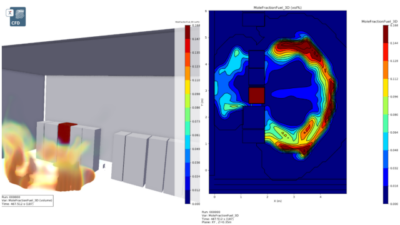View the full story , including all images and figures, in our monthly digital edition
Most engineers focus on lighting, HVAC, windows, and building siting when designing an efficient building. Often secondary on the list is designing a water-efficient building, which can be accomplished with various methods like no-water urinals, dual-flush water closets, and water reclamation, i.e., harvested rainwater and gray water. It’s sometimes referred to as graywater or grey water. Whatever you call it, it generally consists of reusing water originally used for hand-washing.
What are the codes governing the use of reused water? That’s where the issue becomes, well… gray, and many engineers meet a roadblock in either materials funding or local building codes—or both. The 2009 International Plumbing Code Appendix C is the guideline provided to jurisdictions that adopt this plumbing code. Appendix O of the International Residential Code is quite similar, though only for residential dwellings.
The first problem, funding, is the biggest push-back an engineer might receive from a building owner or management firm considering a whole-building gray water system. A whole-building system requires two sets of piping: one for fresh, potable water, and the other for gray water. A double-pipe system can double the materials cost. Plus, putting in place a cistern or other device to store the gray water requires both space and money. Unless the gray water can be moved by gravity to the place it’s eventually used (such as for outdoor irrigation), pumps must be installed to move the water, especially if the water is being pumped to a multistory building for use in something like a cooling tower. Finally, many authorities having jurisdiction (AHJ) want the gray water treated before it’s reused with a tertiary treatment such as a filter, chemical treatment, or ozonation. Most authorities (and building residents) don’t want untreated—and possibly smelly or filmy—gray water sitting around in a storage tank for too long.
Plumbing engineers unfamiliar with nontraditional plumbing designs, equipment, and code issues may run into trouble, possibly with the health department. Local health departments often voice their concern that the gray water might have a cross-connection with potable water, and even a connection to public water. AHJs typically don’t want the water sitting for more than 72 hours, and many have maximum amounts that can be stored at any time. To add to the cost, the gray water influent pipe and the drain to the jurisdiction’s sanitary sewers must be the same size and meet local code.
Meeting with the locals
Building inspectors often have limited knowledge of gray water plumbing codes, a big barrier to plumbing engineers. Water reuse is common and much-needed in the West, so gray water and rainwater use is more common. Engineers, however, don’t want to be first in their cities on anything. Dealing with AHJs and other municipal or state entities could drive up costs or unbillable time. Guidelines may come case-by-case from building inspectors who are struggling to ensure the International Plumbing Code’s guidelines are met in conjunction with their own city’s guidelines. For example, International Plumbing Code Table 605.4 lists all the different pipe materials that can be used, but AHJs often have their own codes, so engineers need to work with both.
Another concern, though not directly addressed by national or local code, is where the water is eventually going to be used. If gray water is collected and used in a water closet in a school, is it safe around young children? Or if the gray water is collected from a hospital or medical facility that uses a lot of water, is it being treated properly before reuse?
Overall, these systems will gain traction as more engineers install them. Buildings working toward U.S. Green Building Council LEED certification can gain up to 5 points for freshwater and wastewater reduction as well as for using innovative techniques to do so. Programs like this may help push gray water reuse into the spotlight.
Additional reading
2009 International Plumbing Code:
Gray Water Policy Center, Oasis Design:
More suggestions and links to local codes are online at
Point-of-use systems
Fairly new to the commercial scene is the point-of-use gray water system, which can be used for small-scale water reuse. These systems address many of the concerns of a whole-building system:
• They’re less costly, and can be used in one or several locations within a building; cost is capped by the number of systems put in place
• They don’t violate any codes, and they address the concerns an AHJ might have with health and safety or water cross-contamination issues
• Little to no room for water storage is required, plus maintenance is simple
• They can be used as a learning tool in schools or other facilities interested in teaching its residents about efficiency.



